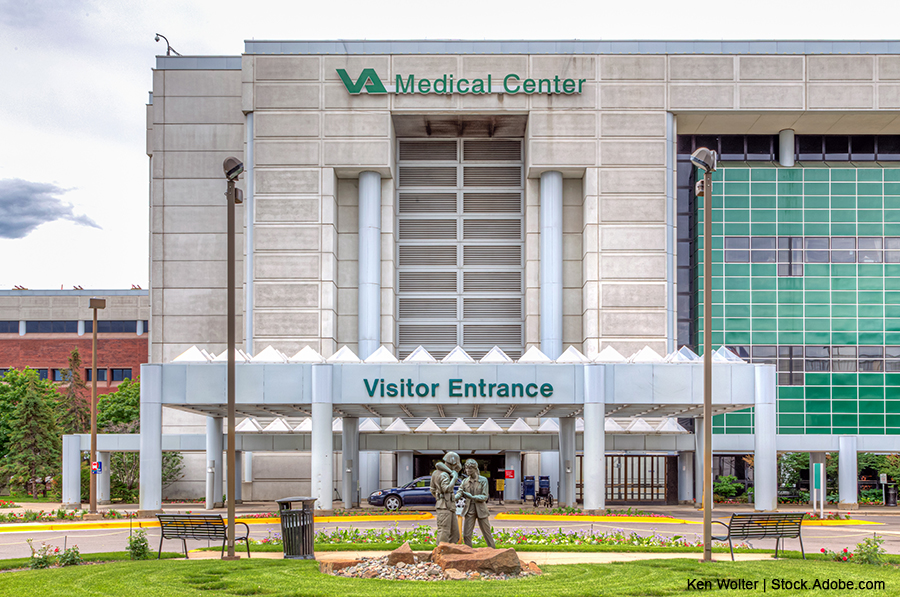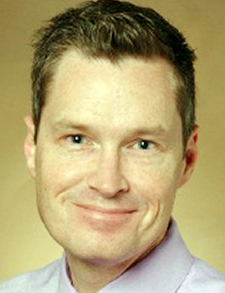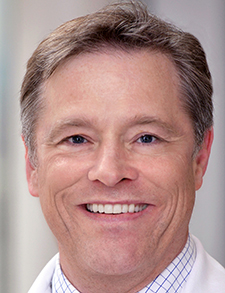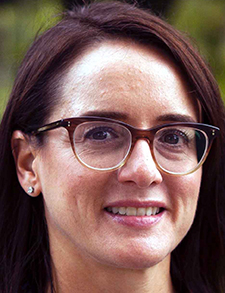 The practice of medicine, particularly in the hospitalized setting, is viewed by some as bureaucracy at scale. The federal government, particularly in the hospitalized setting, could be described the same way.
The practice of medicine, particularly in the hospitalized setting, is viewed by some as bureaucracy at scale. The federal government, particularly in the hospitalized setting, could be described the same way.
In a sense, SHM’s Veterans Affairs (VA) Hospitalists Special Interest Group is arguably the best place for pearls, pitfalls, and practices to navigate the two hierarchies.

Dr. Anderson
“Bureaucracy for the sake of bureaucracy has a well-deserved reputation for hindering efficiency,” said Mel Anderson, MD, MACP, past SIG chair and interim section chief of hospital medicine at the Rocky Mountain Regional VA Medical Center in Aurora, Colo. “And this is just the opposite. This is creating connections that didn’t exist before and creating opportunities that didn’t exist before.”
Dr. Anderson, one of the first backers of an SHM group to connect VA hospitalists, says he sees parallels between the VA and the nature of hospital medicine. Hospitalists across the country can feel isolated in their buildings and duties, despite the shared challenges and accomplishments across the specialty, and the SIG provides a chance for communication and collaboration.
“And as much as the VA is ‘one system,’ we’re probably more accurately like 119 federated hospitals that have varying degrees of connection with one another,” he said. The SIG exists “to leverage expertise to support one another, to improve the care we deliver for patients, to advance professional careers, and to realize opportunities for scholarship.”
Dr. Anderson says the SIG’s sense of community was evident during the COVID-19 pandemic.
“This is not just meeting each month on a Zoom call or FaceTime call, but that you actually know one another and have developed trust in one another and have an actual relationship,” he said. “That then lowers the bar for reaching out. And in this way, you know, a small VA somewhere knows that they’re a phone call away from Michelle who is a phone call away from me and 18 other networks…it’s an unrealized opportunity.”
SIG chair Jeffrey Bates, MD, FHM, says the group’s future is limited only by its ambition.

Dr. Bates
“The answer to that is about as broad as we can imagine,” said Dr. Bates, an associate professor at Baylor College of Medicine and section chief of consult medicine at the Michael E. DeBakey VA Medical Center, both in Houston. “And I mean that literally…we now have an infrastructure that will allow us to develop and communicate quality improvements and system improvement practices at scale in the largest integrated health care system in the U.S. affecting millions of patients.”

Dr. Guidry
SIG vice chair Michelle Guidry, MD, FHM, says the breadth of the VA system means that hospitalists working within it see a combination of both unique situations and routine ones.
“I often get asked by my non-VA hospitalist colleagues, ‘What is different about taking care of veterans than taking care of non-veterans?’ or ‘What can I learn from you about taking care of veterans?’” said Dr. Guidry, an associate professor of medicine at Tulane University and section chief of hospital medicine at the Southeast Louisiana Veterans Healthcare System in New Orleans.
“There are unique constellations of clinical conditions that come with being a veteran that we have become experts in caring for. Examples include toxic exposures, TBI (traumatic brain injury), depression, moral injury, chronic pain, amputation, and PTSD (post-traumatic stress disorder).”
Dr. Guidry sees that experience as a chance to pass along that subject matter expertise, to others in the VA as well as to hospitalists in community and academic settings.
“We have an opportunity and maybe a responsibility to share more broadly,” Dr. Bates said. “Veterans (are cared for) across hospitals in our country, not just in the VA. I think those are things that would be important for us to share.”
Dr. Bates says he’s seen an increasing number of practitioners engaging with the SIG but, perhaps more so than other groups, the lessons learned are just as applicable when brought back to VA centers nationwide.
“All of these other practitioners go out, take that back to the other places,” he said. “It’s got an exponential effect in terms of getting people otherwise engaged in the process. And so one of the things we want to do is make SHM a home for VA hospital medicine. And so we try to bring that part home to everyone. ‘Come to these groups and we’ll get you connected in the way that you want to be connected.’”
Drs. Anderson, Bates, and Guidry agree that the work they’ve put into the SIG—and the work all leadership committees put into their organizations—is only truly successful if it succeeds without them.
“These changes, at the leadership level, at the organizational level, are not about any particular person,” Dr. Anderson said. “It’s about building something that will outlast us and that is not dependent on us. And so I’m always thinking about working myself out of this job in that way. (We) very much embrace the idea of servant leadership.”
Richard Quinn is a freelance writer in New Jersey.